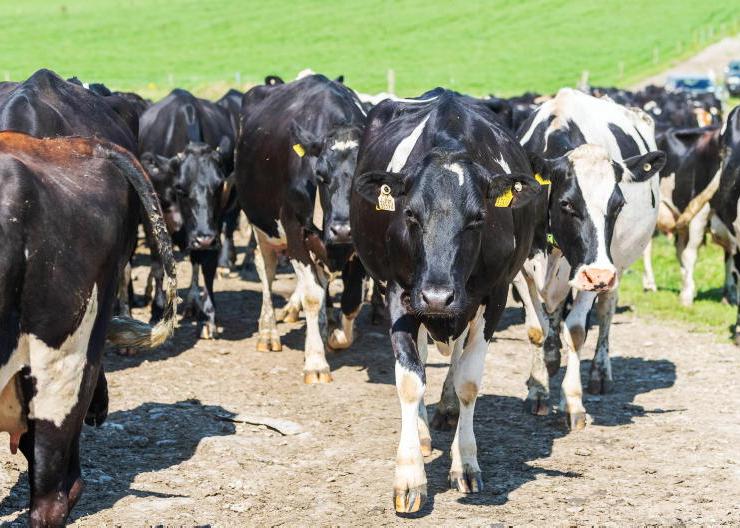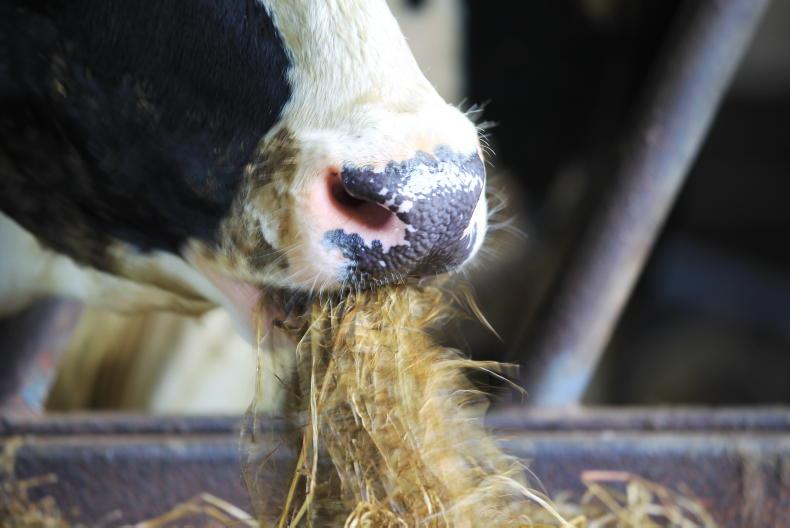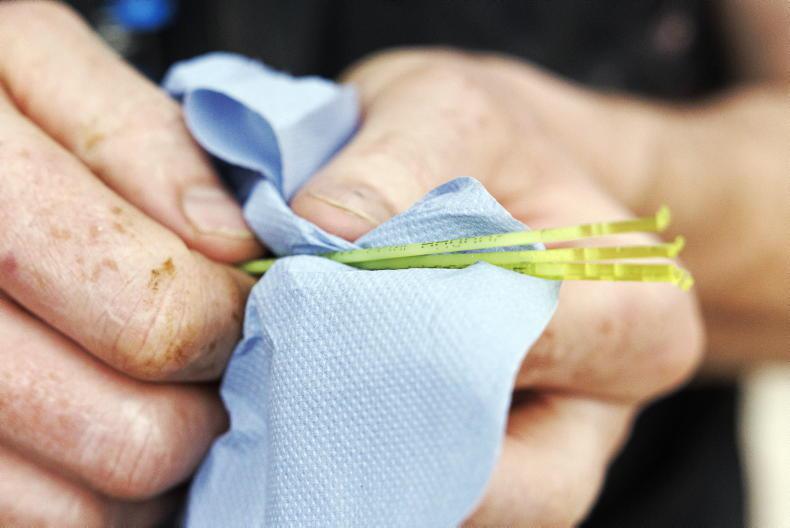Early calved cow nutrition
For farms with cows calved in January and now sucking calves, nutrition is very important. Sometimes it’s easy to say that they will be getting out in a few weeks and will have lots of time to pick up condition again.
Excessive body condition loss post-calving can be a big reason for cows not cycling again. Their body essentially goes into survival mode and they don’t show any heats.
If your silage quality is very good, you may get away with minimal supplementation, but silage quality on drystock farms sometimes isn’t up to scratch and meal feeding is required.
If cows have lost condition, aim to go in with 2-3kg of ration to pick them up again along with good quality ad-lib silage. If silage quality is very poor and you want your cows to milk well and go back in calf, you will need to up the feeding level.
While it has a bigger labour requirement, allowing calves just suck twice a day is a great way of getting cows cycling again.
Calves will get trained into the process very quickly, and cows should come into heat within a few weeks of starting the process.
Don’t forget about breeding vaccinations in early calved cows. It’s a lot easier to get these jobs done when animals are still housed.
Commercial Beef Values
The Commercial Beef Value (CBV) is to go live on mart boards from 1 March. Approximately 80% of Irish marts currently display Euro-Star data on their boards.
The CBV is a new addition and will be an important tool for drystock (non-breeding beef) farmers purchasing animals in the future.
The CBV is a € value on an animal’s overall genetic merit for the traits of importance to a beef finishing enterprise. These are carcase weight, conformation, fat, feed intake and docility.
In the January 2023 evaluation, a number of new traits have been added, such as ‘age at slaughter’ and ‘% in spec’ for the three carcase traits – weight, conformation and fat.
A carbon sub-index has also been included to account for the carbon cost of producing these animals. The carbon sub-index makes up 10% of the average animal’s CBV.
Like the Replacement and Terminal Indexes, the CBV is expressed as a € value with a star rating. The CBV will be displayed on mart boards for genotyped:
Commercial suckler males and uncalved females.Dairy x beef males and uncalved females.Dairy x dairy males.Animals must also be in a herd subscribed to the ICBF HerdPlus service. The CBV will not be displayed on mart boards for ungenotyped animals. Pedigree beef animals, dairy females and calved females will not have a CBV.
Herds signed up to the ICBF HerdPlus service can access the CBV information on their animals online. There is a CBV profile in the ‘View Profiles’ section of their HerdPlus account.
The CBV is displayed on the online profile for both genotyped and ungenotyped animals. The CBV will appear in the same format as the Replacement Index, which is currently being displayed on mart boards.
Farmers buying calves over the next few weeks should insist on purchasing high CBV calves to give themselves a better chance of achieving a margin.
Early calved cow nutrition
For farms with cows calved in January and now sucking calves, nutrition is very important. Sometimes it’s easy to say that they will be getting out in a few weeks and will have lots of time to pick up condition again.
Excessive body condition loss post-calving can be a big reason for cows not cycling again. Their body essentially goes into survival mode and they don’t show any heats.
If your silage quality is very good, you may get away with minimal supplementation, but silage quality on drystock farms sometimes isn’t up to scratch and meal feeding is required.
If cows have lost condition, aim to go in with 2-3kg of ration to pick them up again along with good quality ad-lib silage. If silage quality is very poor and you want your cows to milk well and go back in calf, you will need to up the feeding level.
While it has a bigger labour requirement, allowing calves just suck twice a day is a great way of getting cows cycling again.
Calves will get trained into the process very quickly, and cows should come into heat within a few weeks of starting the process.
Don’t forget about breeding vaccinations in early calved cows. It’s a lot easier to get these jobs done when animals are still housed.
Commercial Beef Values
The Commercial Beef Value (CBV) is to go live on mart boards from 1 March. Approximately 80% of Irish marts currently display Euro-Star data on their boards.
The CBV is a new addition and will be an important tool for drystock (non-breeding beef) farmers purchasing animals in the future.
The CBV is a € value on an animal’s overall genetic merit for the traits of importance to a beef finishing enterprise. These are carcase weight, conformation, fat, feed intake and docility.
In the January 2023 evaluation, a number of new traits have been added, such as ‘age at slaughter’ and ‘% in spec’ for the three carcase traits – weight, conformation and fat.
A carbon sub-index has also been included to account for the carbon cost of producing these animals. The carbon sub-index makes up 10% of the average animal’s CBV.
Like the Replacement and Terminal Indexes, the CBV is expressed as a € value with a star rating. The CBV will be displayed on mart boards for genotyped:
Commercial suckler males and uncalved females.Dairy x beef males and uncalved females.Dairy x dairy males.Animals must also be in a herd subscribed to the ICBF HerdPlus service. The CBV will not be displayed on mart boards for ungenotyped animals. Pedigree beef animals, dairy females and calved females will not have a CBV.
Herds signed up to the ICBF HerdPlus service can access the CBV information on their animals online. There is a CBV profile in the ‘View Profiles’ section of their HerdPlus account.
The CBV is displayed on the online profile for both genotyped and ungenotyped animals. The CBV will appear in the same format as the Replacement Index, which is currently being displayed on mart boards.
Farmers buying calves over the next few weeks should insist on purchasing high CBV calves to give themselves a better chance of achieving a margin.










SHARING OPTIONS